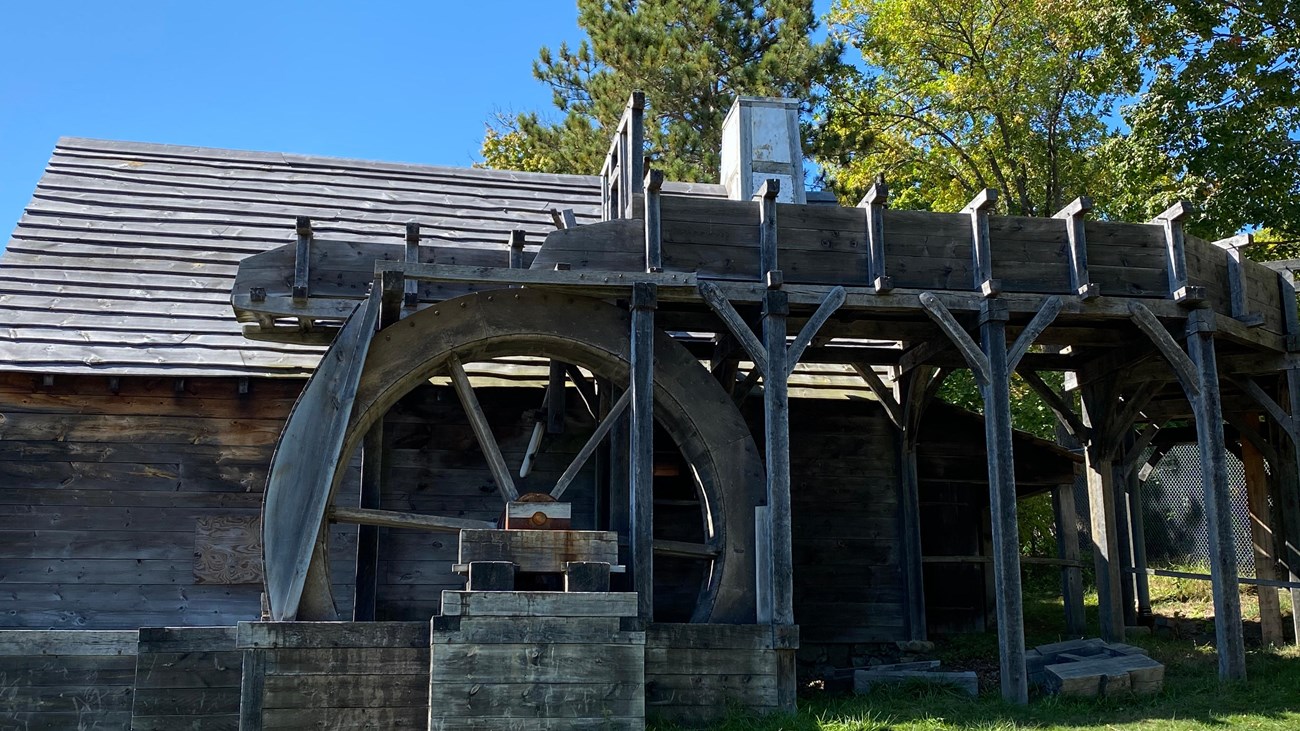Last updated: July 17, 2021
Thing to Do
Take an Industrial Site Tour

NPS Photo / Elizabeth Thakkar
This guided tour begins at the Visitor Center and stops at three significant locations. At each, there is a mechanical demonstration using historic replicas of water wheels that would have been used in the original iron works. Please consult the park calendar to learn more about tour times.
Blast Furnace - Using charcoal as its fuel, the Saugus blast furnace roared to life in 1646 and smelted locally-mined bog ore and gabbro into cast iron "pig" bars, blocks of iron that would be further processed in the forge to make wrought iron. A more fluid, "gray iron" was also poured into molds to make pots, kettles, skillets, firebacks and salt-pans as a finished product
Forge - Most of the iron produced at the furnace was moved over to the forge, where sow bars were converted into wrought iron. A five-hundred pound hammer was used to forge a hot ball of iron into wrought iron "merchant bars," the Saugus works' major product. These bars were sold to merchants and blacksmiths for manufacture into finished products such as axes, hammers, hardware, and fireplace tools.
Rollings and Slitting Mill - A number of merchant bars were sheared in half and heated in the furnace, then run through rollers to draw them out. Some of these rolled pieces were shipped as they were, while others were passed back through slitters, reducing them to thin rods. Most were bundled for shipment to Boston and other New England settlements, although the Saugus blacksmith cut some into nails for local use.
The tour begins near the visitor center on the upper level of the site. To access the first industrial site, the tour moves down along a steep paved walkway. A parking lot at the lower level of the site provided a more reasonable access point to the industrial sites. The tour traverses along uneven, mostly paved, but occasionally rough surface areas.
